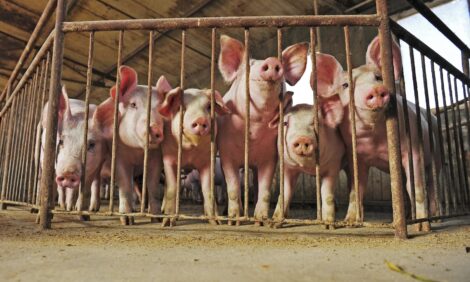



FAO/OECD release meat outlook for 2022-2031
Per capita beef consumption is projected to fall 2% by 2031FAO & OECD released its Agricultural Outlook 2022-2031 report, highlighting the forecast for consumption for the coming decade.
In terms of consumption, FAO/OECD said the shift in meat consumption from foodservice to home cooking that occurred during the COVID pandemic is expected to be short term and will revert back as restrictions are lifted. Drivers of growth in consumption include economic and population growth. Both are expected to continue to increase, particularly in lower-income countries. In high-income countries, FAO/OECD said it expects demand to level off or trend down as ageing populations and consumer concerns over diet and environment influence behaviour.
Poultry meat consumption has risen in virtually all countries and regions. Consumers are attracted to poultry due to lower prices, product consistency and adaptability, and higher protein/lower fat content. Consumption of poultry meat is projected to increase globally to 154 Mt over the projection period, accounting for nearly half of the additional meat consumed. On a per capita basis, these robust growth rates in poultry consumption reflect the significant role it plays in the national diets of several populous developing countries, including China, India, Indonesia, Malaysia, Pakistan, Peru, the Philippines and Viet Nam.
Global pig meat consumption is projected to increase to 129 Mt over the next ten years. However, on a per capita consumption is expected to stagnate. Pork will remain the meat most eaten in the EU, even though it will remain stable in per capita terms, as changes in diets will favour poultry as a cheaper and perceived better food choice. In most of Latin America prices have positioned pork and poultry as the favoured meats for rising demand from the middle class. Several Asian countries which traditionally consume pork such as Korea and Viet Nam, are also projected to increase consumption on a per capita basis.
Global beef consumption is projected to increase to 76 Mt over the next 10 years. However, per capita consumption is projected to fall 2% by 2031. Asia and the Pacific is the only region where per capita beef consumption is projected to increase. China is the world’s second largest consumer of beef and per capita consumption is projected to rise 10% by 2031. Most countries with high beef consumption will see a decline in favour of poultry meat especially in the Americas and Oceania, where preference for beef is among the highest in the world (per capita consumption will fall in Argentina -5%, Brazil -2%, the US -4%, and Oceania -15%).
As incomes and population increase, more dairy products are expected to be consumed over the medium term. Overall, per capita consumption is expected to increase 0.4% p.a. to 21.9 kg (milk solids equivalent) by 2031 in high-income countries compared to 2.0% p.a. (21.2 kg) and 1.5% p.a. (5.4 kg) in low-middle income and low-income countries, respectively. Most dairy production is consumed in the form of fresh dairy products,1 which are unprocessed or only slightly processed (i.e. pasteurised or fermented) and their share in world consumption is expected to increase over the next decade. The key drivers for this are strong demand growth in India, Pakistan and Africa. In low and middle-income countries, fresh dairy products comprise over two-thirds of the average per capita dairy consumption (milk solids), while consumers in high income countries tend toward processed products.








